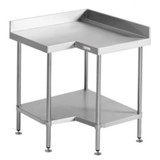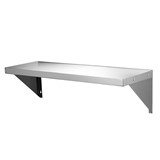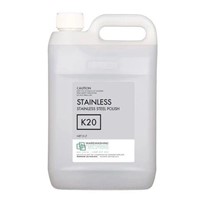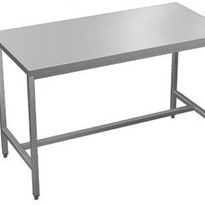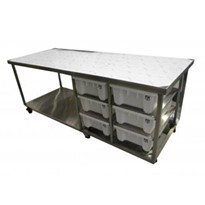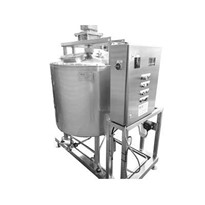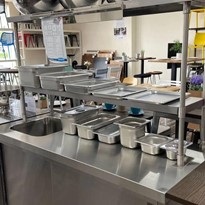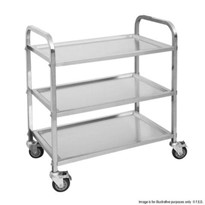Stainless steel is a corrosive-resistant alloy known for its durability and long-lasting properties. It’s a popular material that’s used in a variety of different applications such as kitchen appliances, cutlery, and even jewellery. Stainless steel can resist daily wear and tear while maintaining its structural integrity. And while this alloy is a very sturdy material, dirt and grime can eventually cause it to rust and corrode. That’s why it’s important to clean stainless steel on a regular basis to prevent this from happening.
It doesn’t take a lot to clean stainless steel, but there are certain instructions to follow so you don’t end up damaging it. It’s best to start with basic cleaning methods and work your way up when needed. Before we get started, gather the needed cleaning materials first. These are:
- Microfiber cloth
- Bucket of warm water
- Dish soap
- Glass cleaner
- Stainless steel cleaner
- Vinegar (alternative to stainless steel cleaner)
Now we can start the cleaning procedure. Here are the best ways to clean stainless steel with supplies that are readily available from your home. The below tips are perfect for both cutlery polishers and glass polishers.
6 ways you can clean stainless steel
1. Cleaning stainless steel with warm water.
For most routine cleaning, a microfiber cloth and warm water are usually enough since the warm water will break down dirt and grime and can be easily wiped off.
- Grab a microfiber cloth and soak it in warm water. Gently wipe down the stainless steel and make sure to follow the grain of the steel when cleaning. This will protect its finish and prevent unnecessary scratches.
- Dry the surface with a new microfiber cloth. Microfiber cloth is recommended because it picks up dirt and grime easily, leaving your stainless steel squeaky clean and free of any watermarks or spots.
2. Cleaning stainless steel using glass cleaner.
Stainless steel is prone to fingerprints and sometimes, warm water alone won’t do the trick. If you’re having a hard time cleaning fingerprint smudges, glass cleaner is an effective solution.
- Wipe down the stainless steel first with a cloth soaked in warm water. Spray the glass cleaner onto a microfiber cloth and gently wipe the area, again following the grain of the stainless steel to prevent surface scratches.
- Repeat the process until the fingerprints are removed. Once done, grab a new microfiber cloth and wipe down the stainless steel to a full shine.
- Some stainless steel appliances have fingerprint coatings that resist smudges. If you’re a bit OC, you can opt for fingerprint-resistant stainless steel.
3. Cleaning stainless steel using dish soap.
For stainless steel that’s covered in oily residue or grime (i.e. countertops and kitchen appliances), using dish soap is recommended. This will remove tough stains and it won’t harm your stainless steel appliances.
- Add ½ cup of dish soap to a bucket of warm water. Soak the microfiber cloth and wipe down the stainless steel in a circular motion to loosen up oily residue.
- Rinse the surface thoroughly to completely remove any dirt and residue. Grab a dry microfiber cloth and wipe down the stainless steel. Make sure to follow the grain of the steel to prevent scratches.
4. Cleaning stainless steel with a dedicated cleaner.
If the stains are really tough like signs of rusting or corrosion, a stainless steel cleaner should be used to clean the surface. These cleaners both remove stains and protect the stainless steel from scratches, making it an ideal solution for heavy-duty cleaning.
- Shake the bottle well and spray a light mist on the surface of the stainless steel. Grab a microfiber cloth and wipe down the surface.
- If tough stains are present, a light-duty scrubbing pad will remove the stains without scratching your stainless steel. Spray the stainless steel cleaner and scrub in a gentle, circular motion until the stains have been fully removed.
- Wipe down the surface with a microfiber cloth afterwards.
5. Cleaning stainless steel with vinegar.
Vinegar is a great alternative to stainless steel cleaner. Its acidic properties break down rust formation, gunk buildup, and also acts as a disinfectant to kill off bacteria.
- Mix 1 cup of vinegar to 2 cups of water. Transfer the solution to a spray bottle and spray a light mist on the surface of the stainless steel.
- Grab a microfiber cloth and wipe down the surface. Follow the grain to prevent unwanted scratches.
- Dry the surface with a new microfiber cloth after wiping. You want to make sure that the surface is completely dry because leaving acids like vinegar for a prolonged period can cause stainless steel surfaces to corrode. Only use this method if there are moderate rust formations on the stainless steel.
6. Cleaning with rinse aid
When applicable look to use rinse aid mixed with warm water, as an option to polish and clean. Rinse aid while it is less of a cleaner is, in fact, a great polisher. It is able to break down molecules and aids in drying and also leaves a shine.
Conclusion
Cleaning stainless steel is quite an easy procedure. The most important thing is that you should clean it on a regular basis to prevent corrosion and rust formation. Stainless steel is a durable material that requires frequent maintenance in order to prolong its lifespan. Follow these steps to ensure proper cleaning of stainless steel appliances and items.




